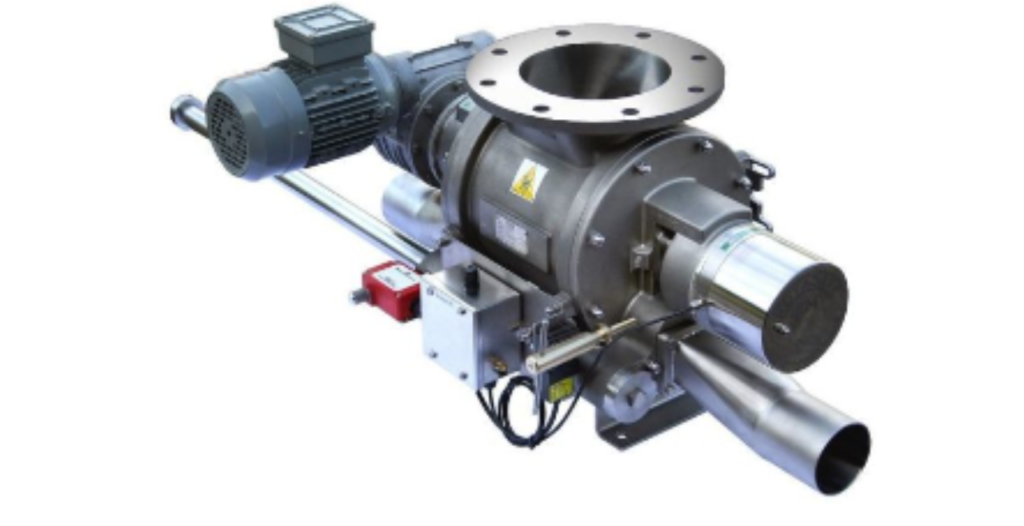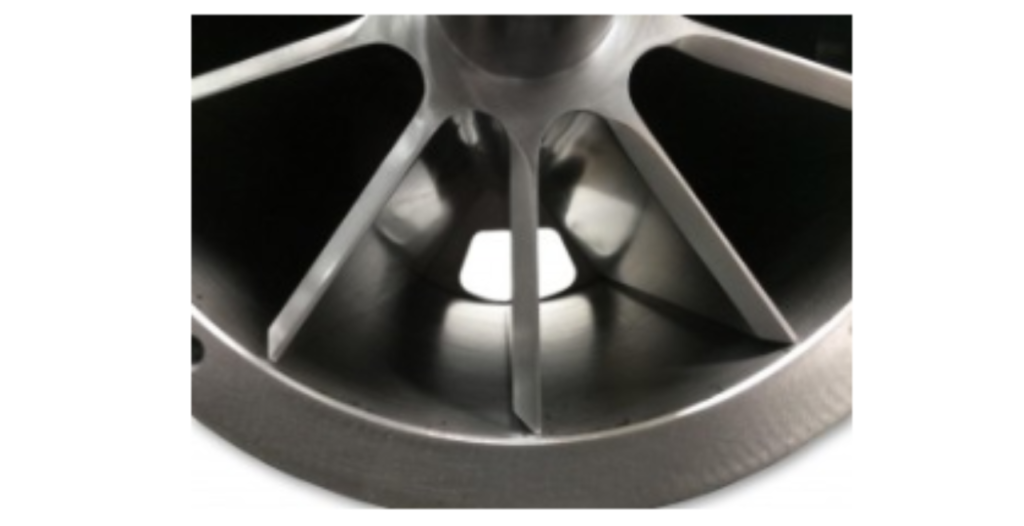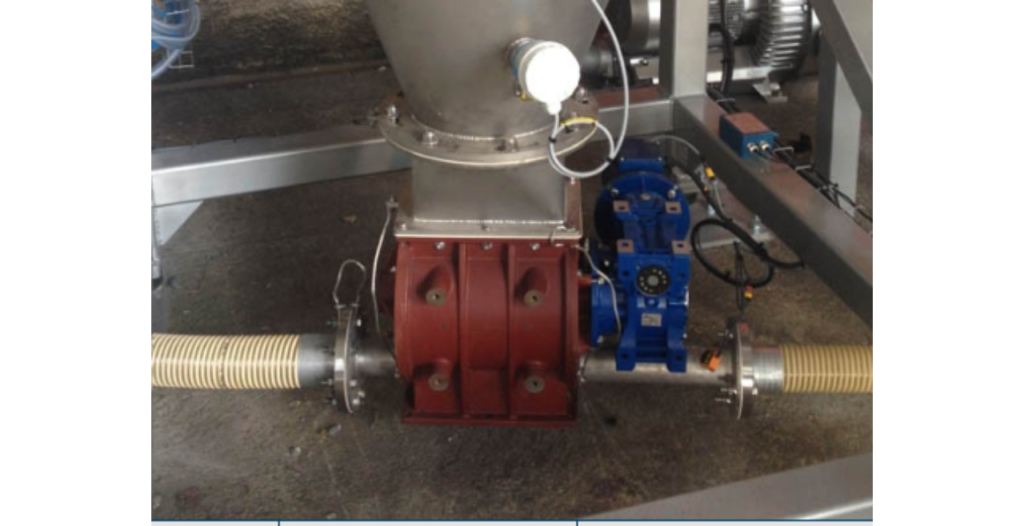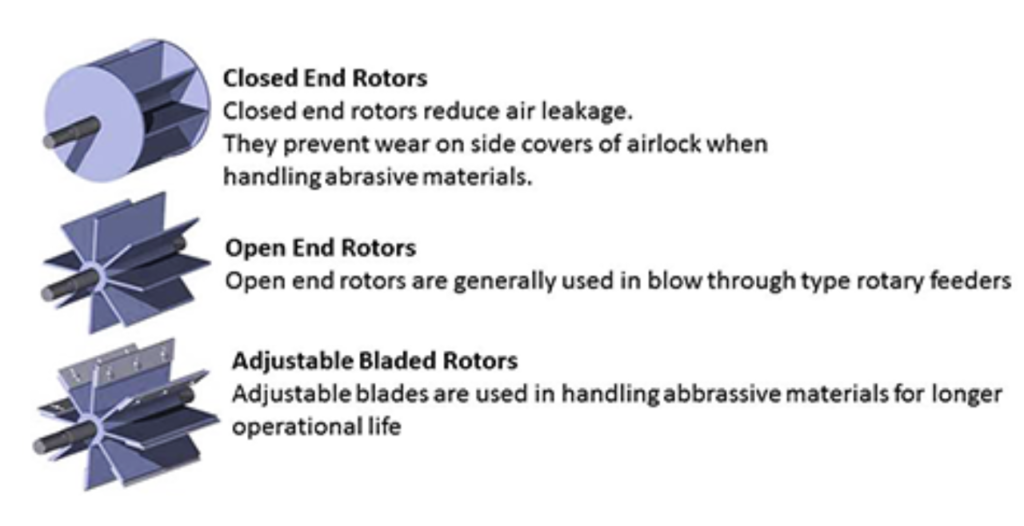Rotary Air Valve (RAL)
Blow Thru RAL
|
Blow Thru RAL is a type of rotary valve used in material handling and pneumatic conveying systems. Unlike the traditional Drop-Thru Rotary Valve, the Blow-Thru valve is specifically designed for use in pressurized systems where it maintains an airtight seal while handling materials. Here’s how it works: |
| Inlet and Outlet Ports: The valve has an inlet and an outlet, similar to other rotary valves. Bulk material enters through the inlet. |
| Rotor with Pockets: Inside the valve, there is a rotating rotor with pockets or chambers. The rotor rotates continuously, trapping and carrying bulk material from the inlet toward the outlet. |
| Material Discharge: As each pocket reaches the outlet, it releases the material into the downstream equipment or process. However, unlike the Drop-Thru valve, the material is discharged into a pressurized conveying line. |
| Airtight Seal: The Blow-Thru Rotary Valve is designed to maintain an airtight seal between the inlet and outlet, even in a pressurized environment. This sealing prevents air leakage, maintains system pressure, and minimizes dust emissions. |

| Advantages: |
| Pressurized Systems: Designed specifically for use in pressurized pneumatic conveying systems, ensuring efficient material transfer and maintaining pressure. |
| Airtight Seal: Maintains a reliable airtight seal between the inlet and outlet, preventing air leakage and preserving system efficiency. |
| Material Flow Control: Provides precise control over the flow of bulk materials, allowing for regulated and continuous material transfer. |
| Continuous Operation: Capable of continuous operation, ensuring a steady and controlled material flow in pressurized systems. |
| Blow-through valves are ideal for more cohesive or sticky powders like cocoa, flour, or milk powders. These powders may not discharge properly from a drop-through rotary valve, compacting and sticking to the inside of the rotor vanes. In a blow-through rotary valve, discharge is optimized by blowing these easily compacted powders out of the rotor pockets, which helps keep the rotor clear of buildup. |
| Another advantage of blow-through rotary valves is their low profile. Compared to a drop-through valve of similar size, the blow-through systems’ conveying line runs much closer to the valve centerline allowing it to take up much less height. This makes blow-through rotary valves a good choice for low-clearance installations where a drop-through may not fit. |

| Disadvantages: |
| Maintenance: Requires regular maintenance to ensure proper functioning, including inspection of rotor vanes, seals, and bearings. |
| Material Jamming: As with other rotary valves, certain materials, such as sticky or abrasive substances, may lead to jamming or wear of the valve components. |


| Applications: |
| Blow-Thru Rotary Airlock Valves are primarily used in industries and applications involving pressurized pneumatic conveying systems, including: |
| Pneumatic Conveying: A key component in pneumatic conveying systems for the controlled transfer of bulk materials under pressure. |
| Food Processing: Used in food processing and manufacturing for the handling of ingredients, powders, and granules. |
| Pharmaceuticals: In pharmaceutical manufacturing where precise material transfer under pressure is required. |
| Chemicals: Utilized in chemical processing to control the flow of chemicals and powders. |
| Plastics: In plastics processing for conveying plastic pellets and resin under pressure. |
| Agriculture: Commonly employed in grain handling and feed processing within pressurized systems. |



Summary:
A Blow-Thru Rotary Airlock Valve is a specialized rotary valve designed for pressurized pneumatic conveying systems.
It maintains an airtight seal while efficiently handling materials, making it suitable for various industries and applications where pressurized material transfer is essential.
Its advantages include precise material flow control and the ability to operate continuously. However, like other rotary valves, it requires regular maintenance to ensure reliability and performance in industrial processes. Proper selection and maintenance are crucial for their effectiveness in pressurized systems


 Sales & Marketing:
Sales & Marketing:  Service Supports:
Service Supports:  Website:
Website: 